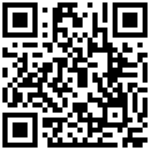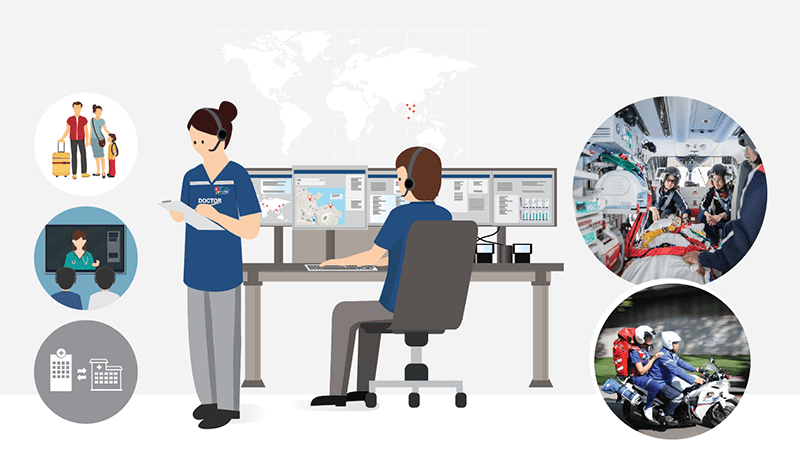Service Request
BDMS Medevac Center and Bangkok Hospital Phuket Dispatch Center
Call Request
- 24 hours operate
- Multi-languages interpreter
Consultation
- Medical Control and Specialist
- Provide instruction and plan for transportation
Coordination
- EMS
- Inter-facility transfer
- Cost Estimates
Seamless transfer
- Transfer patient to most appropriate facility
BES office:
17D, building, Bangkok hospital, 2 Soi Soonvijai, New Petchaburi Rd, Bangkapi,
Huaykwang, Bangkok 11130
Tel. +6627169999
e-mail: [email protected]
Emergency Ambulance request
When to call? How do I know it’s emergency?
You should call nearest emergency medical services if you or someone else is experiencing following symptoms:
- Chest pain or tightness
- Breathing difficulties
- Uncontrollable bleeding or other sign cause of shock
- Severe burns
- Poisoning
- Unconsciousness or seizures
- Sign of stroke including vertigo, loss of balance, paralysis, slurred speech or facial droop
- A life-threatening injury including fall from height, high velocity road traffic accident.
How to call?
Stay calm and Call
Simply punch in the numbers of nearest Emergency Medical Services and stay on the line.
For BES you can call 1-7-2-4 and 1-7-1-9 for Bangkok Hospital Phuket and Bangkok Hospital Siriroj
Or Emergency Lert Button in BES-I lert you application.
Answer the question!
The dispatcher will ask you to describe the emergency. Stay calm and answer any questions they have. Even if it feels like they are wasting time, the questions are meant to get you the help you need as quickly as possible. They have usually already dispatched help, and need to ask more questions to provide updates to first-responders.
Required information to dispatch help including;
- Location of the emergency
- Your name and phone number including contact number of person at scene if you are not at the scene.
- Details of the problem (e.g., whether an injured person is unconscious, breathing, or bleeding)
- Whether there are any dangers at the scene or special concern such as fire, down power line, present of weapon, violent, accident in active traffic area, risk of transmission of infectious disease including Tuberculosis, COVID-19 or any emerging disease or even overweight patient that may require special support
Follow the dispatcher’s instructions !
You should always stay on the line until the dispatcher tells you it’s ok to hang up. They may give you instructions about what to do. Follow these carefully–they can prevent further problems, and even save your life (or someone else’s). The dispatcher may give you instructions on things like:
- Giving first aid
- Performing CPR
- Moving to a safer location
Dispatcher will send an ambulance, if you are within our service area, having emergency condition and response time to the scene is appropriate for patient’s emergency. If the patient’s location is too far from our service and waiting for our team may increase risk to the patient, our dispatch will recommend you to call nearest EMS services.
Inter-Facility Transfer Request
Transport Process
- Inform hospital staff.
If you require to transfer the patient from current medical facility to hospital in BDMS group inform hospital staff and consult with attending physician about your inquiry. - Transfer information
Referral coordinator will ask about referral reason to ensure that we will provide appropriate services comply with your inquiry. Referral report contain patient’s clinical information, treatment received and investigation result will be required to plan for safe transport and continuity of care at the receiving facility. - Cost and payment method
After transfer decision is made based on patient’s safety and receiving facility has confirmed to receive the patient. Our supervisor will provide estimate cost of transport to payer. Payment method could be bank transaction to hospital account for self-payment or transfer of the payment guarantee paper from contracted company or insurance. - Patient Transport
After receive information, we will evaluate risk of transportation including patient’s condition, route/road condition, weather condition and staff fatigue risk. Decision on mode of transportation, level of care and time of operation will be based on patient’s and team’s safety. - Personal Belonging and accompanied person
Accompanied person may be allowed on board if it is safe to do so. Those who request to be on board with patient must be identified and permit by Dispatch center or airport authority for air transport. Personal ID/passport must be send to Dispatch center by Email.
Safety regulation regarding medical transportation will be informed and must be followed throughout transportation.
1 cabin size lugg age may be allowed on ambulance if can properly secured, please inform dispatch center if you need support regarding transfer of patient’s family/friend or additional luggage.
Luggage/Personal belonging will be required to inspect by ambulance staff or airport authority
Please scan QR code below for safety transport instruction with ground ambulance


